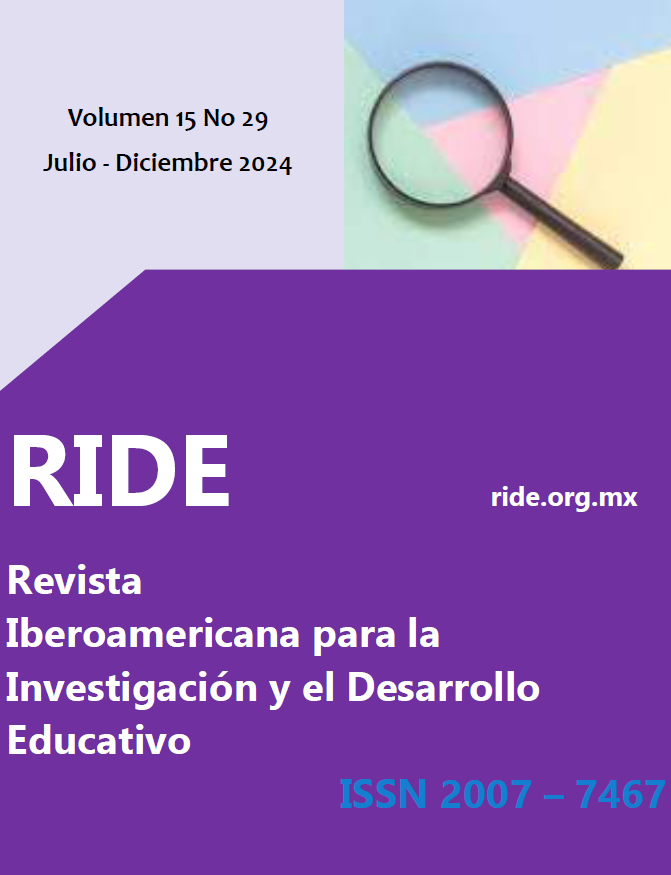Diagnosis of the development index in the primary, secondary, and peripheral zones of the mega project of the interoceanic corridor (CIIT) towards regional development
Abstract
Sustainable regional development articulates the provision of goods and services aimed at local and international markets, offering an advantage in attracting new investments. It also facilitates information exchange among economic agents from different regions, sharing experiences to coordinate with various governments and international organizations to enrich the design, financing, and execution of public policies. In this regard, the article aims to analyze the development index of municipalities comprising the primary, secondary, and peripheral zones of the Mega Project of the Interoceanic Corridor of the Istmo of Tehuantepec (CIIT) and the possibility of achieving sustainable regional development. The hypothesis posited is that the implementation of the interoceanic corridor megaproject will have a positive impact on the regional development of the primary, secondary, and peripheral zones of the Tehuantepec Isthmus region. The hypothetico-deductive scientific method is employed, with a mixed design. Among the findings, it is noted that the primary zone has the highest number of municipalities with a high level of development. It is concluded that disparities in the development of the Interoceanic Corridor require specific policies. The focus on productive specialization underscores its potential to drive regional economy. Considering local perspectives and seeking a balance between development and resource preservation highlights the need for a sustainable approach in regional projects.
Downloads
References
Banco Interamericano de Desarrollo (BID). (18 de abril de 2024). Programa de ciudades emergentes y sostenibles. https://www.iadb.org/es/quienes-somos/tematicas/desarrollo-urbano-y-vivienda/iniciativas-de-desarrollo-urbano/programa-de#:~:text=El%20Programa%20de%20Ciudades%20Emergentes,planes%20de%20acci%C3%B3n%20de%20ciudades.
Cruz, B. y Flores, C. R. (12 de noviembre de 2022). Amnistía Internacional. Resistencia comunitaria en el Istmo de Tehuantepec: https://www.amnesty.org/es/latest/news/2022/11/resistencia-comunitaria-istmo-tehuantepec/
Cuganesan, S. y Floris, M. (2020). Investigar la toma de perspectiva cuando los equipos de megaproyectos de infraestructura involucran a las comunidades locales: navegar las tensiones y equilibrar las perspectivas. Revista internacional de gestión de proyectos. Elsevier, 38(3), 153-164. https://doi.org/https://doi.org/10.1016/j.ijproman.2020.01.006
Galaso, P., Masi Fadlala, F., Picasso, S., Rodríguez , A. y Servín Belotto, M. (2023). Organizaciones de apoyo: conectando redes para la innovación empresarial en clústeres de un país en desarrollo. Investigaciones Regionales – Journal of Regional Research, 1(1), 19.
Gobierno del Estado de Oaxaca. (24 agosto 2022). Oaxaca ejemplo de desarrollo regional en México. Coordinación de comunicación social: https://www.oaxaca.gob.mx/comunicacion/oaxaca-ejemplo-de-desarrollo-regional-en-mexico/
Gudynas, E. (2003). Ecología, economía y ética del Desarrollo Sostenible. Centro Latino (p. 43). CLAES -Centro Latino Americano de Ecología Social.
Hernández, S. R., Fernández Collado, C., & Baptista Lucio, M. d. (2010). Metodología de la investigación. McGRAW-HILL / INTERAMERICANA EDITORES, S.A. DE C.V.
INEGI. (22 de julio de 2020). Panorama sociodemográfico de México. Composición por edad y sexo: https://www.inegi.org.mx/programas/ccpv/2020/tableros/panorama/
Kessel, D. y Levy, G. (2022). El sur también existe: un ensayo sobre el desarrollo regional de México. Economía mexicana, 11(2), 205-260.
Miguel, V. A. (2004). Ciencia regional: Principios de Economía y Desarrollo. En V. A. Miguel, Ciencia regional: Principios de Economía y Desarrollo (p. 329). CONACYT_PIFOP. Instituto Tecnológico de Oaxaca.
Mladen Vukomanović, I. y Sonja K, I. (2021). Trust in megaprojects: A comprehensive literature review of research trends. International Journal of Project Management, 39(4), 325-338. https://doi.org/https://doi.org/10.1016/j.ijproman.2020.10.007.
Organización de Naciones Unidas (ONU). (1972). The United Nations Programme in Regional Development. A introduction to Subnational Planning. Nueva York.
Rodriguez, M. A., & Vial, c. C. (2021). Índice compuesto y multidimensional de desarrollo regional: una propuesta para América Latina. iberoam.(23), 1-33. https://doi.org/http://dx.doi.org/10.32457/riem.v23i1.580.
Rivera, H. J., Blanco Orozco, N. V., Alcántara Salinas, G. y Pascal Houbron, E. (2017). ¿Desarrollo sostenible o sustentable? La controversia de un concepto. Revista Posgrado y Sociedad Sistema de Estudios de Posgrado Universidad Estatal a Distancia, 15(1), 57-67.
Secretaría de Economía. (08 mayo 2023). Corredor Interoceánico del Istmo de Tehuantepec - CIIT. Gobierno de México: https://www.gob.mx/se/acciones-y-programas/corredor-interoceanico-del-istmo-de-tehuantepec?state=published
Tamayo, F. R. (2000). Las políticas de desarrollo industrial regional y sus nexos teóricos: desconcentración, laissez-faire e iniciativas locales en México. División de Administración Pública, México D.F.

This work is licensed under a Creative Commons Attribution 4.0 International License.
In order to promote the development and dissemination of research in education in Latin America, the Ibero-American Journal for Educational Research and Development (RIDE) adhered to the Budapest Open Access Initiative, which is why it is identified as a Open access publication. This means that any user can read the complete text of the articles, print them, download them, copy them, link them, distribute them and use the contents for other purposes. Creative Cummons licenses allow users to specify the rights to use an open access journal available on the Internet in such a way that users know the rules of publication. Authors who publish in this journal accept the following conditions: Authors they keep the author's rights and give the magazine the right of the first publication, with the work registered with the attribution license of Creative Commons, which allows third parties to use the published material whenever they mention the authorship of the work and the first publication in this The authors can make other independent and additional contractual agreements for the non-exclusive distribution of the version of the article published in this journal (eg, include it in an institutional repository or publish it in a book) as long as they clearly indicate that The work was published for the first time in this magazine. Authors are allowed and recommended to publish their work. low on the Internet (for example on institutional or personal pages) before and during the review and publication process, as it can lead to productive exchanges and to a greater and faster dissemination of the published work















